Darius the I of Persia
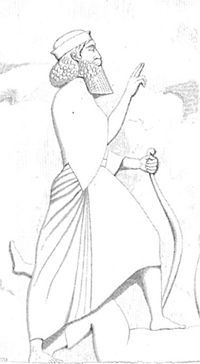
Darius conquered Scythia, Thrace and many cities of the northern Aegean, while Macedonia submitted voluntarily. The Asiatic Greeks and Greek islands had submitted to Persian rule by 510 BCE. They were being governed by tyrants responsible to Darius.
Nonetheless, there were certain Greeks who were pro-Persian such as the Medizing Greeks which were largely grouped at Athens. This improved Greek-Persian relations as Darius opened his court and treasuries to the Greeks that wanted to serve him. These Greeks served as soldiers, artisans, statesmen and mariners for Darius. However, Greek fear of the Persians becoming very strong and the constant interference by the Greeks in Ionia and Lydia were all stepping stones in the conflict that was yet to come between Persia and Greece.
Nonetheless, there were certain Greeks who were pro-Persian such as the Medizing Greeks which were largely grouped at Athens. This improved Greek-Persian relations as Darius opened his court and treasuries to the Greeks that wanted to serve him. These Greeks served as soldiers, artisans, statesmen and mariners for Darius. However, Greek fear of the Persians becoming very strong and the constant interference by the Greeks in Ionia and Lydia were all stepping stones in the conflict that was yet to come between Persia and Greece.
Militiades
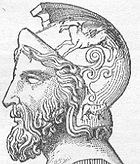
He became a vassal of Darius I of Persia, joining Darius' expedition against the Scythians around 513 BC. He joined the Ionian Revolt of 499 BC against Persian rule, establishing friendly relations with Athens and capturing the islands of Lemnos and Imbros (which he eventually ceded to Athens). However, the revolt collapsed in 494 BC and in 492 BC Miltiades fled to Athens to escape a retaliatory Persian invasion. His son Metiochos was captured by the Persians and made a lifelong prisoner, but was nonetheless treated honourably as a de facto member of the Persian nobility. Arriving in Athens, Miltiades initially faced a hostile reception for his tyrannical rule in the Chersonese. Having spent three years in prison he was sentenced to death for the crime of tyranny. However, he successfully presented himself as a defender of Greek freedoms against Persian despotism and escaped punishment. He was elected to serve as one of the 10 generals (strategoi) for 490 BC. He is often credited with devising the tactics that defeated the Persians in the Battle of Marathon later that year.
Xerxes the I of Persia
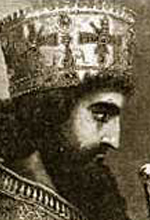
Darius left to his son the task of punishing the Athenians, Naxians, and Eretrians for their interference in the Ionian Revolt and their victory over the Persians at Marathon. From 483 BC Xerxes prepared his expedition: A channel was dug through the isthmus of the peninsula of Mount Athos, provisions were stored in the stations on the road through Thrace, two bridges were built across the Hellespont. Soldiers of many nationalities served in the armies of Xerxes, including the Assyrians, Phoenicians, Babylonians, Indians, Egyptians, Jews and Arabs.[
According to the Greek historian Herodotus, Xerxes' first attempt to bridge the Hellespont ended in failure when a storm destroyed the flax and papyrus bridge; Xerxes ordered the Hellespont (the strait itself) whipped three hundred times and had fetters thrown into the water. Xerxes' second attempt to bridge the Hellespont was successful.Xerxes concluded an alliance with Carthage, and thus deprived Greece of the support of the powerful monarchs of Syracuse and Agrigentum. Many smaller Greek states, moreover, took the side of the Persians, especially Thessaly, Thebes and Argos. Xerxes set out in the spring of 480 BC from Sardis with a fleet and army which Herodotus claimed was more than two million strong with at least 10,000 elite warriors named Persian Immortals. Xerxes was victorious during the initial battles.
According to the Greek historian Herodotus, Xerxes' first attempt to bridge the Hellespont ended in failure when a storm destroyed the flax and papyrus bridge; Xerxes ordered the Hellespont (the strait itself) whipped three hundred times and had fetters thrown into the water. Xerxes' second attempt to bridge the Hellespont was successful.Xerxes concluded an alliance with Carthage, and thus deprived Greece of the support of the powerful monarchs of Syracuse and Agrigentum. Many smaller Greek states, moreover, took the side of the Persians, especially Thessaly, Thebes and Argos. Xerxes set out in the spring of 480 BC from Sardis with a fleet and army which Herodotus claimed was more than two million strong with at least 10,000 elite warriors named Persian Immortals. Xerxes was victorious during the initial battles.
Themistocles
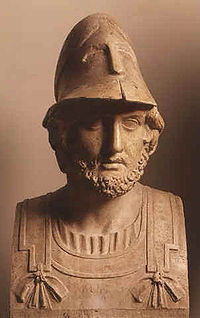
He was an Athenian politician and general. He was one of a new breed of politicians who rose to prominence in the early years of the Athenian democracy, along with his great rival Aristides. As a politician, Themistocles was a populist, having the support of lower class Athenians, and generally being at odds with the Athenian nobility. Elected archon in 493 BC, he took steps to increase the naval power of Athens, which would be a recurring theme in his political career. During the first Persian invasion of Greece, he fought at the Battle of Marathon, and was probably one of the 10 Athenian strategoi (generals) in that battle.
In the years after Marathon, and in the run up to the second Persian invasion he became the most prominent politician in Athens. He continued to advocate a strong Athenian navy, and in 483 BC he persuaded the Athenians to build a fleet of 200 triremes; these would prove crucial in the forthcoming conflict with Persia. During the second invasion, he was in effective command of the Greek allied navy at the battles of Artemisium and Salamis. Thanks to subterfuge on the part of Themistocles, the Allies possessed all the advantages at Salamis, and the decisive Greek victory there was the turning point in the invasion, which was ended the following year by the defeat of the Persians at the Battle of Plataea.
In the years after Marathon, and in the run up to the second Persian invasion he became the most prominent politician in Athens. He continued to advocate a strong Athenian navy, and in 483 BC he persuaded the Athenians to build a fleet of 200 triremes; these would prove crucial in the forthcoming conflict with Persia. During the second invasion, he was in effective command of the Greek allied navy at the battles of Artemisium and Salamis. Thanks to subterfuge on the part of Themistocles, the Allies possessed all the advantages at Salamis, and the decisive Greek victory there was the turning point in the invasion, which was ended the following year by the defeat of the Persians at the Battle of Plataea.
Pausanias
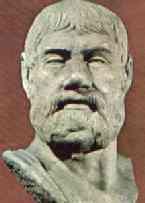
He was a Spartan general of the 5th century BC. He was the son of Cleombrotus and nephew of Leonidas I, serving as regent after the latter's death, since Leonidas' son Pleistarchus was still under-age. Pausanias was also the father of Pleistoanax, who later became king. Pausanias was responsible for the Greek victory over Mardonius and the Persians at the Battle of Plataea in 479 BC, and was the leader of the Hellenic League created to resist Persian aggression during the Greco-Persian Wars.
After the Greek victories at Plataea and the Battle of Mycale, the Spartans lost interest in liberating the Greek cities of Asia Minor. However, when it became clear that Athens would dominate the Hellenic League in Sparta's absence, Sparta sent Pausanias back to command the League's military.
In 478 BC Pausanias was suspected of conspiring with the Persians and was recalled to Sparta, however he was acquitted and then left Sparta of his own accord, taking a trireme from the town of Hermione. After capturing Byzantium Pausanias was alleged to have released some of the prisoners of war who were friends and relations of the king of Persia. However, Pausanias argued that the prisoners had escaped. He sent a letter to King Xerxes (son of Darius), saying that he wished to help him and bring Sparta and the rest of Greece under Persian control. In return, he wished to marry the King’s daughter. After receiving a letter back from Xerxes in which Xerxes agreed to his plans, Pausanias started to dress like a Persian aristocrat and he started to adopt Persian customs.
Many Spartan allies joined the Athenian side because of Pausanias’ arrogance and high-handedness.
After the Greek victories at Plataea and the Battle of Mycale, the Spartans lost interest in liberating the Greek cities of Asia Minor. However, when it became clear that Athens would dominate the Hellenic League in Sparta's absence, Sparta sent Pausanias back to command the League's military.
In 478 BC Pausanias was suspected of conspiring with the Persians and was recalled to Sparta, however he was acquitted and then left Sparta of his own accord, taking a trireme from the town of Hermione. After capturing Byzantium Pausanias was alleged to have released some of the prisoners of war who were friends and relations of the king of Persia. However, Pausanias argued that the prisoners had escaped. He sent a letter to King Xerxes (son of Darius), saying that he wished to help him and bring Sparta and the rest of Greece under Persian control. In return, he wished to marry the King’s daughter. After receiving a letter back from Xerxes in which Xerxes agreed to his plans, Pausanias started to dress like a Persian aristocrat and he started to adopt Persian customs.
Many Spartan allies joined the Athenian side because of Pausanias’ arrogance and high-handedness.
